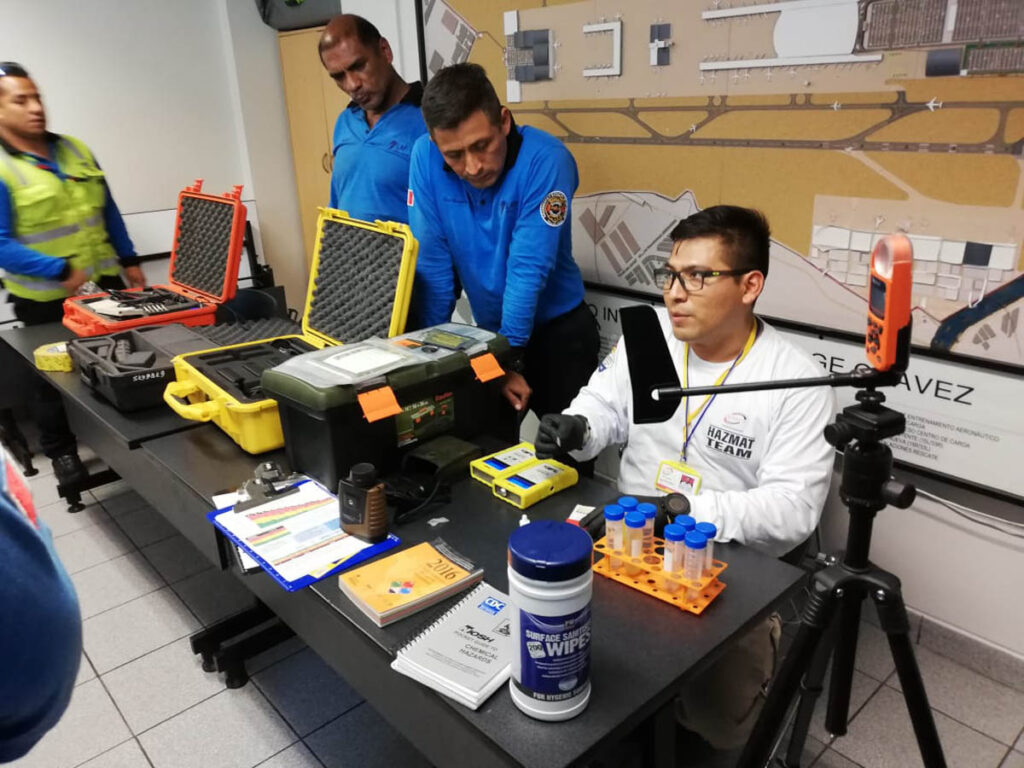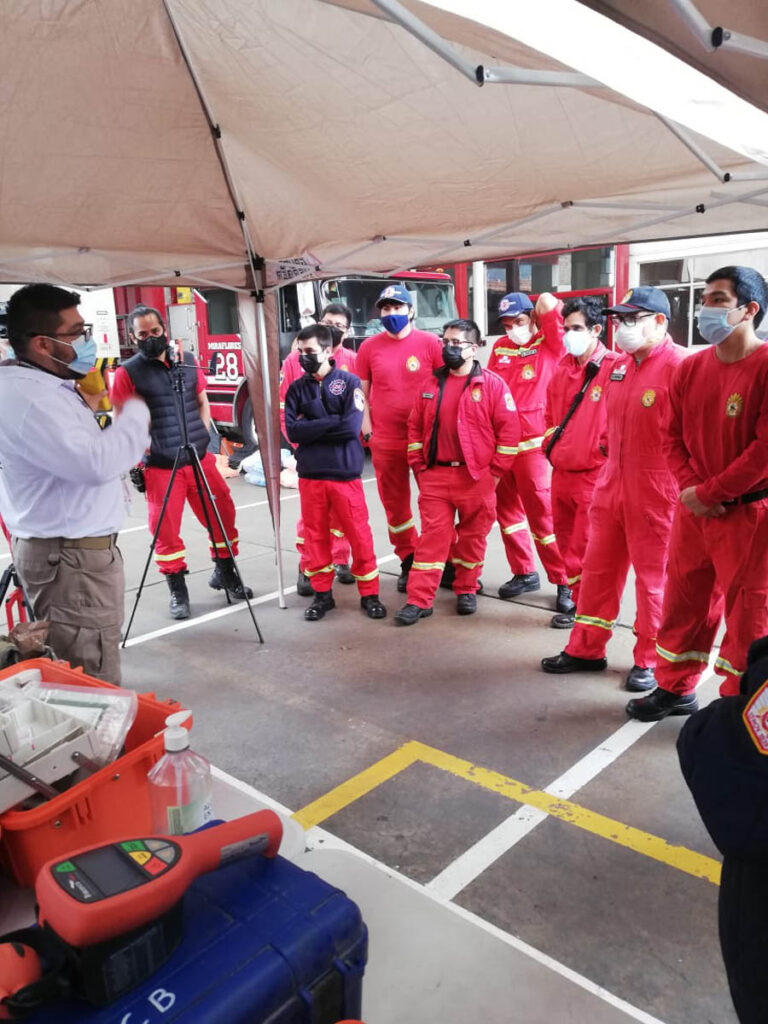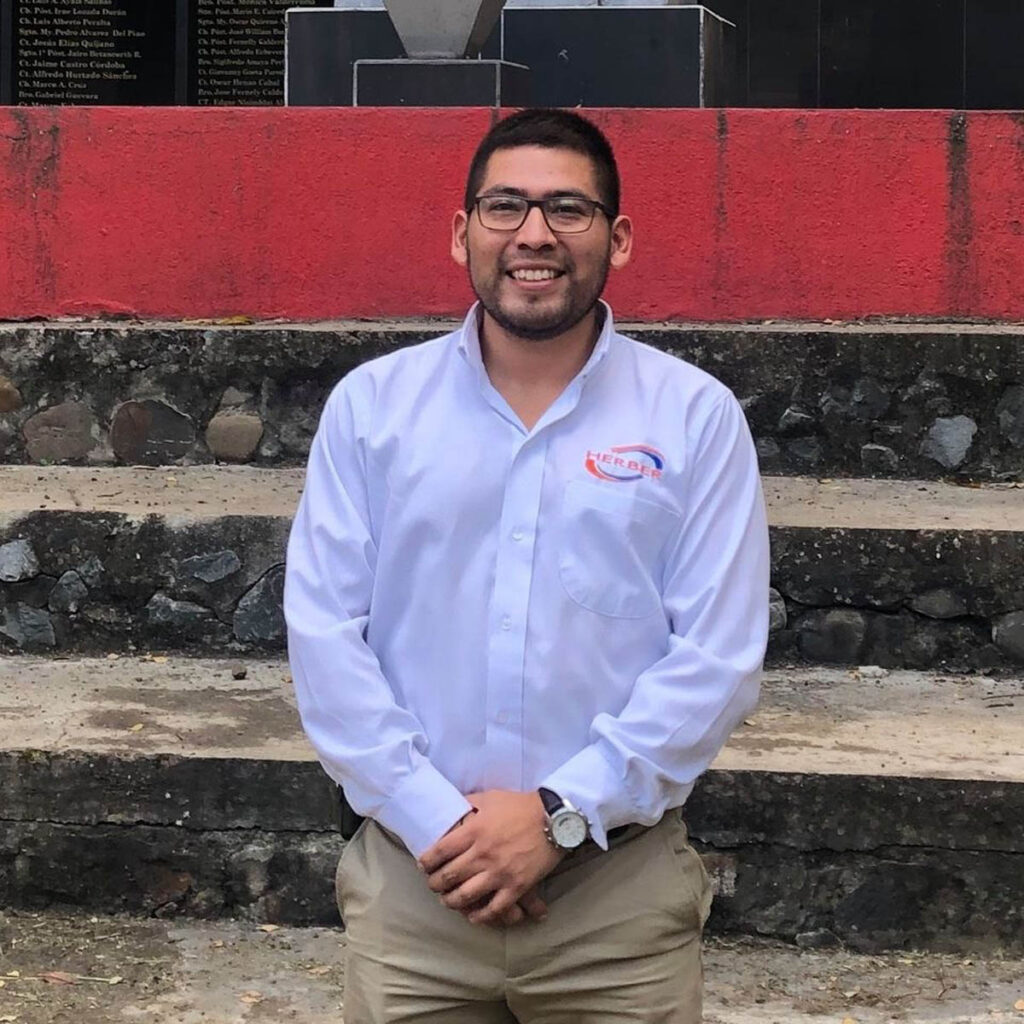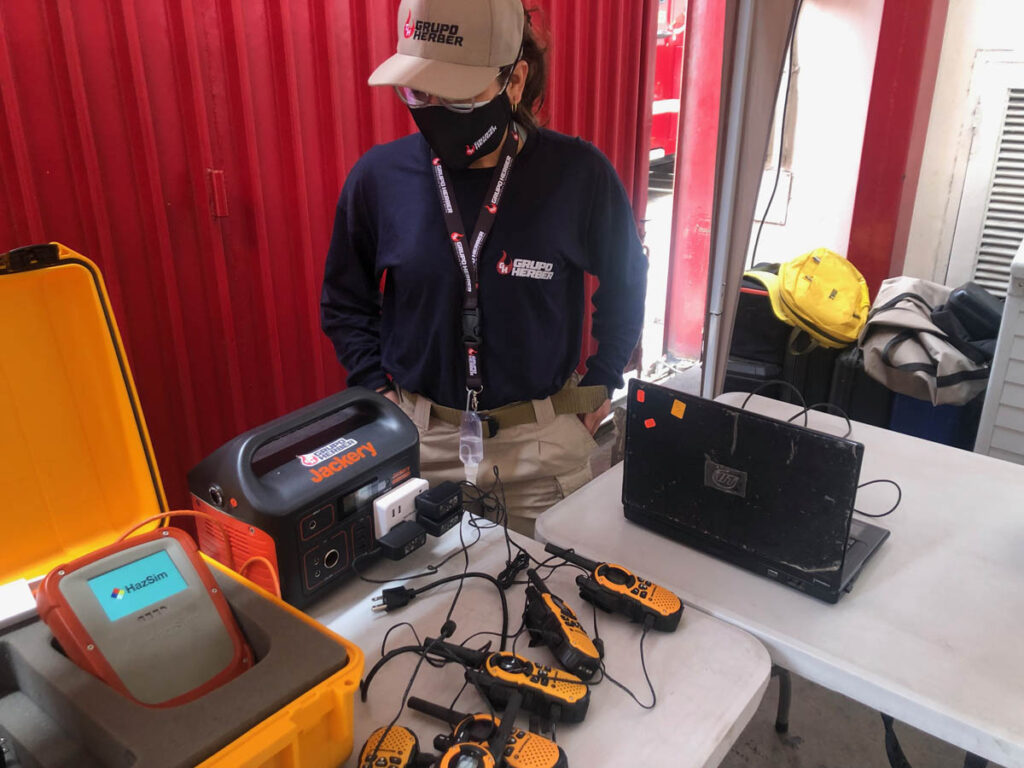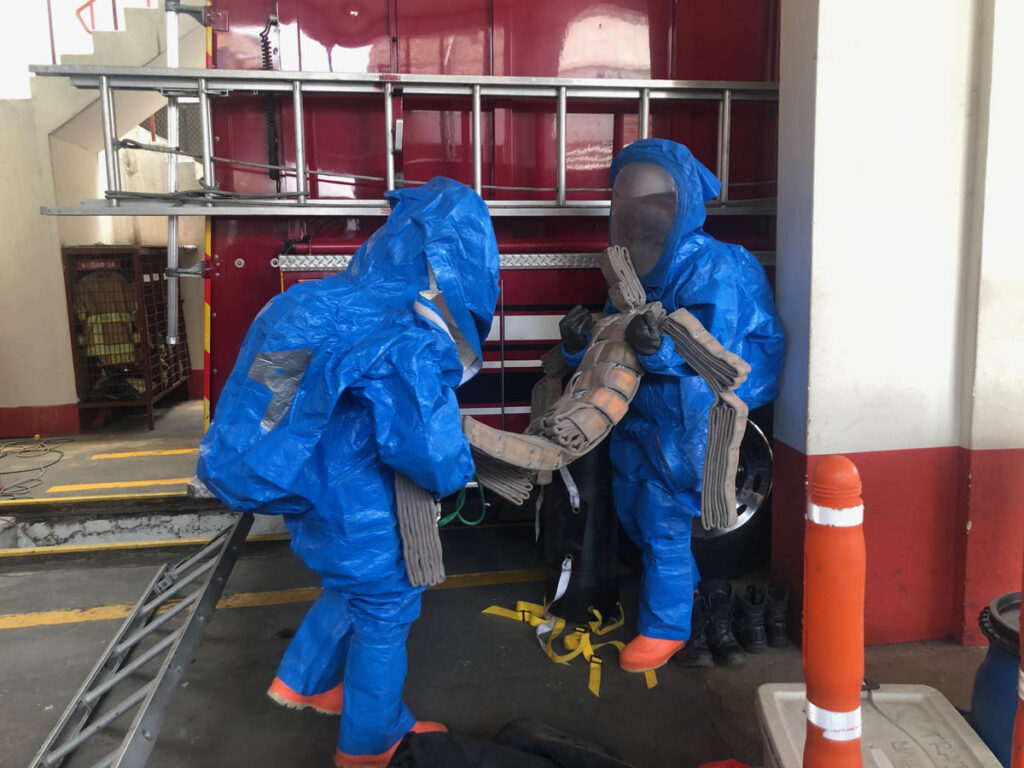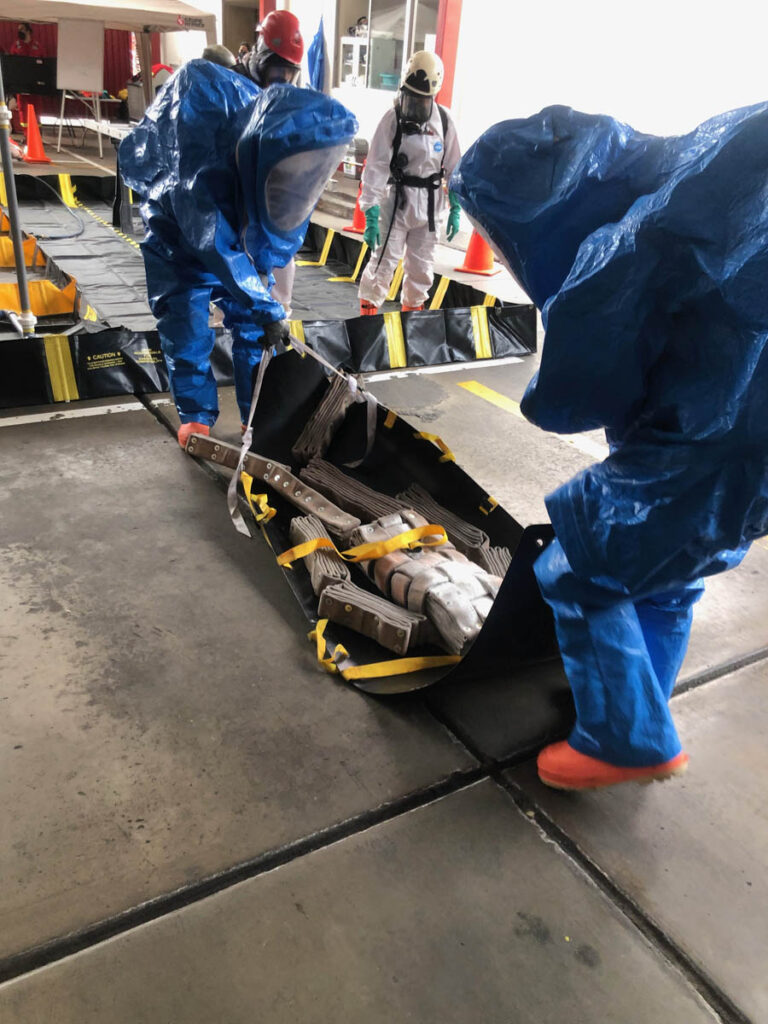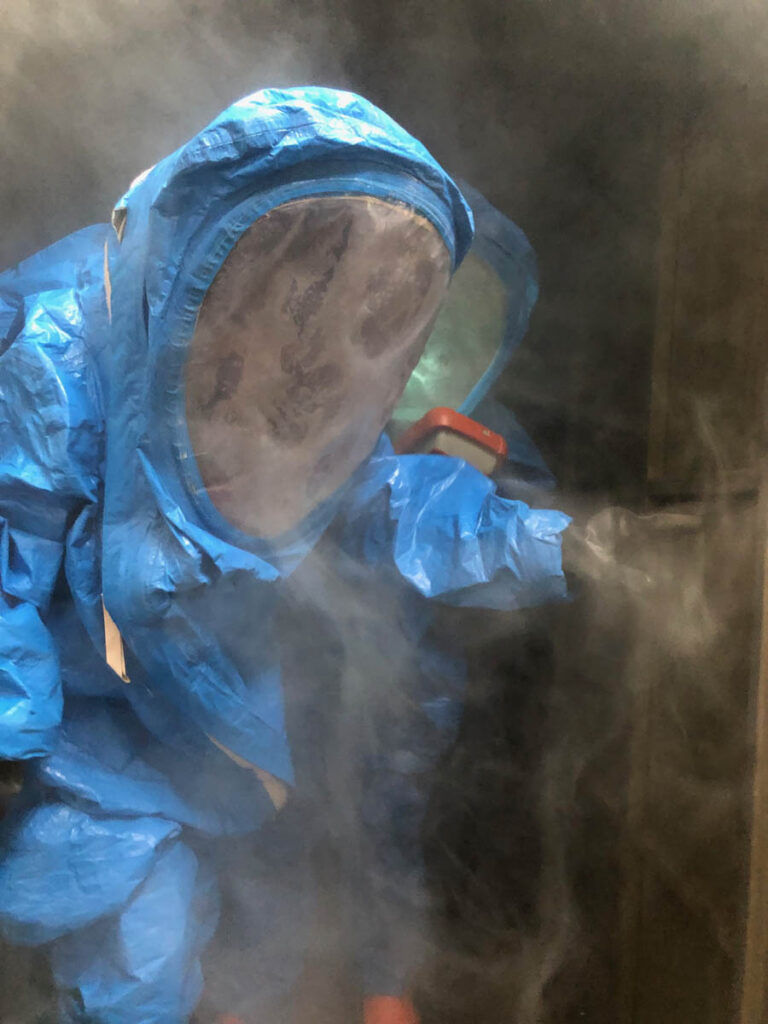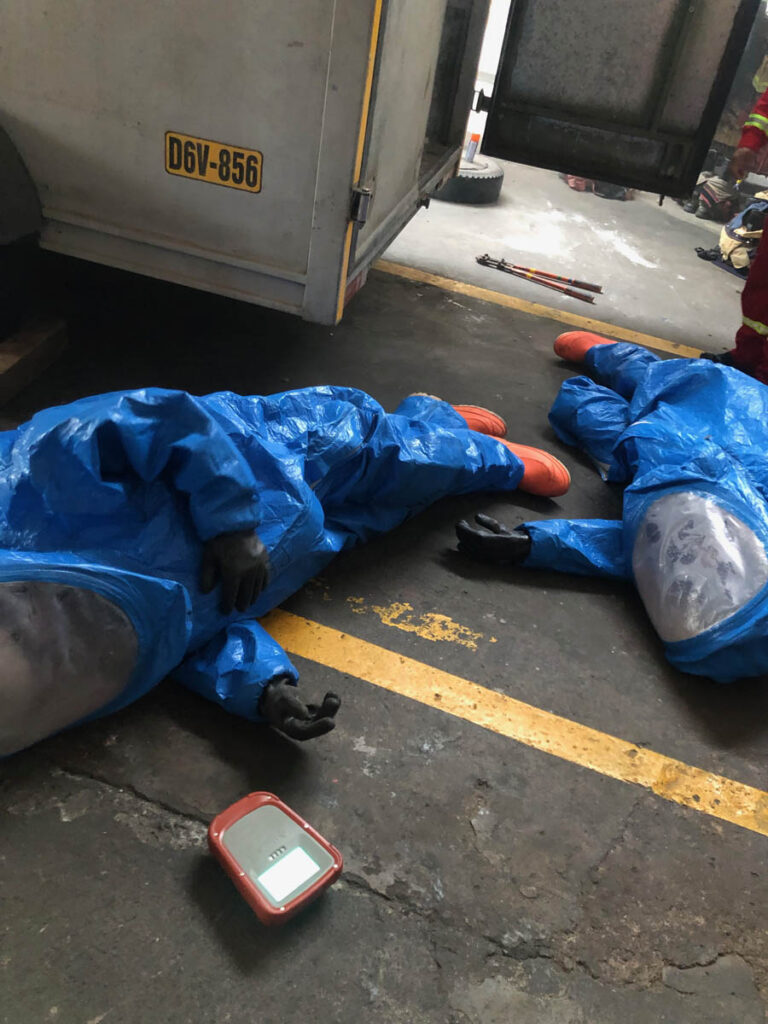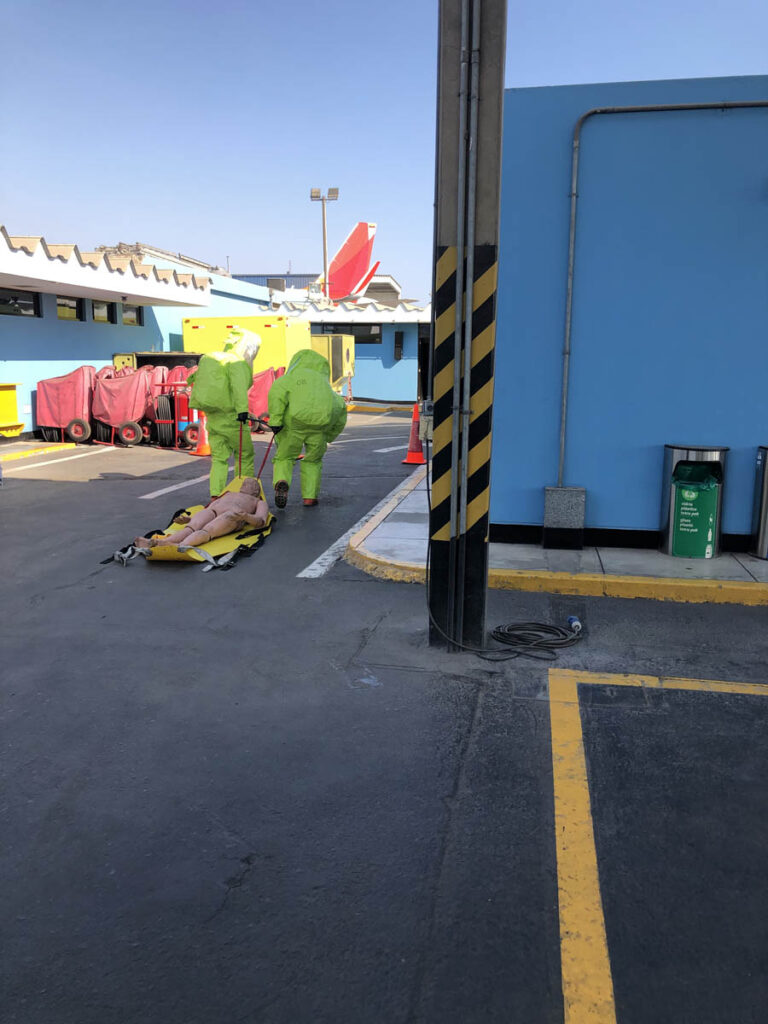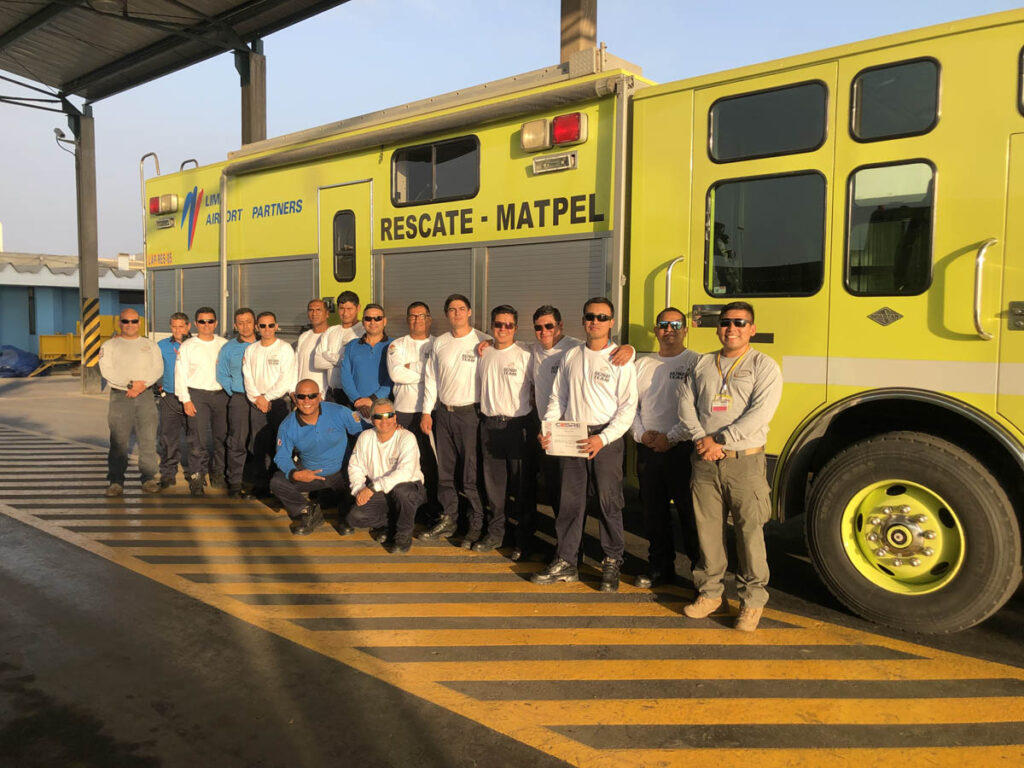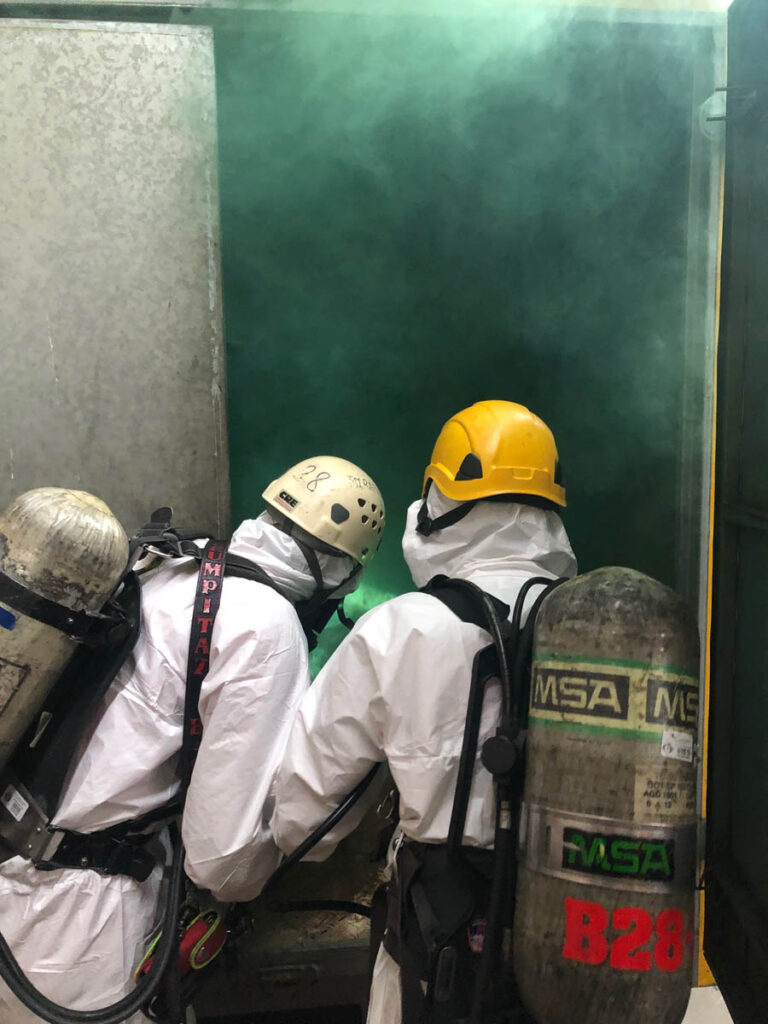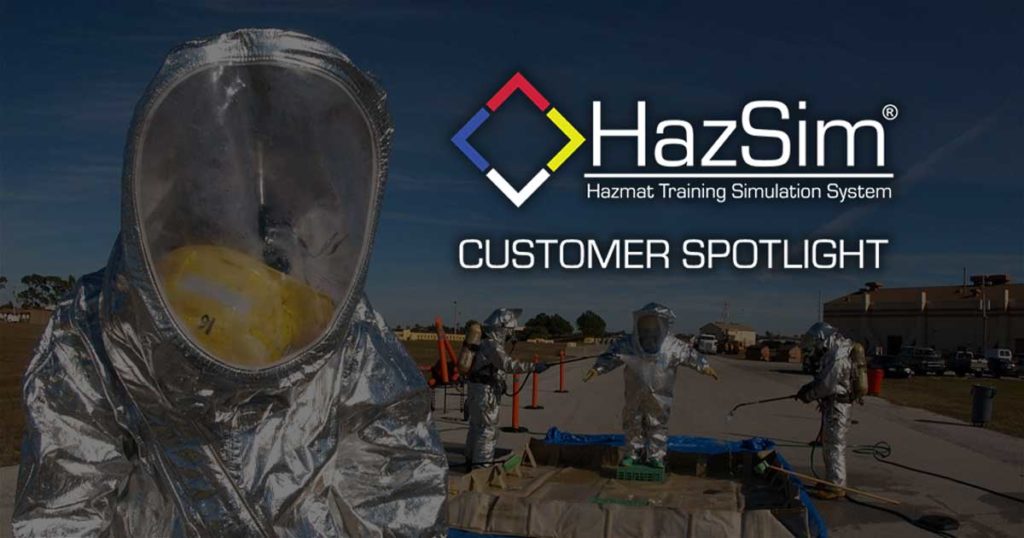Starting as a volunteer firefighter stationed with the hazmat team in Lima, Peru, Alvarado began to absorb knowledge and skills. That led him to starting up his own training and response company, where he’s Peruvian firefighters’ hazmat response capabilities. Here’s a look at his story.
Describe your hazmat career.
My career began when I entered the fire station Miraflores No. 28 (2008). We have the oldest hazmat truck in Peru (1992), one of the few that is always operational in Lima. So, the firefighters of my company can quickly accumulate large amounts of hazmat emergencies per year. Remember that firefighters in my country are 100% volunteers, so maintaining operations is complicated.
Everyone sees my fire company as an example in hazardous materials and WMD, and in emergencies they always expect us to solve the incident. Then you can understand the great responsibility that I felt immediately when I set foot in the station. We spent many hours understanding how the equipment works, but the most important thing we have is to be able to learn from many fire chiefs who already have more than 30 years of experience in this type of emergency.
After a few years, I understood that I had to update my knowledge. I began to invest in my training, paying for courses in the United States, Colombia and Mexico, always under the guidelines of NFPA 472, NFPA 1072 and OSHA 29 CFR 1910.120.
Five years ago, together with investors, we opened a company called Grupo Herber (the names of my parents Hernán and Berta), where we are dedicated to marketing, responding to emergencies and generating training with safety, rescue and incident hazmat and WMD teams — where I am the lead instructor. We did so well with the brands we represent, that we can provide the best and most real training in the country, not only to the companies that hire us. This year we started to provide free training to fire stations in my country who have hazmat trucks and who deserve training as good as anywhere in the world.
What type of students do you train and what facilities do you have at your disposal?
Most of the students who pass through our classrooms are very eager to learn how to respond to incidents with hazardous materials. We have a training field where we can generate simulations of spills of particulate solids, liquid or gas leaks. Because we market equipment, we always have up-to-date and certified equipment for all our students. With the help of trucks and trailers, we can take our equipment to any part of the country. And we already have plans to start training in Ecuador and Chile.
How do you mix up the training scenarios so they don’t become stale?
We are always in contact with national or international instructors, who like us, always seek to innovate in training. That’s where I found out about HazSim and it quickly became one of our most used simulators. We also understand that virtual reality will be one of the pillars in the future. We are already in discussions with software developers to incorporate it into our trainings.
What’s the key to best preparing responders to handle real scenarios outside of the controlled training environment?
We handle these four concepts to improve the level of our students:
· Always have our theoretical tools (manuals, PowerPoint, books, guides) updated. This way they will always have the best information.
· Give them experience. Our instructors have on average more than 20 years responding to these types of incidents as volunteer firefighters or for a private agency. This is a great plus for students to learn from people who respond to incidents on a daily basis.
· The course structure is always based in an andragogical way under the guidelines of NFPA 1041. This way, the participants complete the evolutions, with us never trying to make them fail. This is a great support since it gives the students confidence, and little by little we see progress during classes.
· We keep communication channels open post instruction, responding to any concern that is generated in the classrooms and that has not been cleared in the training.
What is your biggest obstacle when conducting hazmat training?
It is often difficult for us to make participants understand that incidents with hazardous materials are resolved with teamwork. We may have few or many resources, but if we do not deal with incidents in a coordinated way, we will most likely not be effective in our work. And that can be reflected in a lack of security or losing a victim.
What wicked training problem keeps you up at night?
Give the best possible training, so that our students can attend hazmat or WMD incidents in the safest, fastest and most efficient way.
What would it take to solve it?
Using more simulators, HazSim has been a wonderful tool to make our trainings more and more real. It gives us the opportunity to constantly test the knowledge of the students and do endless scenarios. We are currently thinking about using VR. We have consulted with many colleagues in the world and this tool is giving great results.
What devices do you rely on most for realistic training?
We were lucky enough to acquire a HazSim a few years ago. Since then we have ensured that participants in both hazmat and confined-space courses acquire good habits in reading multi-gas monitors, and can evaluate each scenario correctly.
How, if at all, do you alter training for new responders versus seasoned veterans?
Everyone receives the same training. Since we have updated all our courses under NFPA 470, both newbies and veterans have many paradigms about it. We have noticed that veterans in their refresher classes tend to finish the scenarios faster and take more time in the briefing. On the other hand, newbies spend more time on the stage, but they do not take as much time to analyze it during the briefing.
How do you keep the classroom portion of hazmat training fresh?
It is easy in these times where one can find out about incidents anywhere in the world. In each course, we seek to incorporate videos, images or scenarios that most likely can happen in the student’s jurisdiction. The other way is by talking with other instructors in different countries — with them, we share experiences and generate a better course every time.
What’s the optimum class size and why?
Between 12 to 16 participants is the best number for us. It is easy to form groups and divide them into tasks or put them together and generate a larger scenario. Less than that amount is complicated, since they finish quickly. More than 16 also complicates training. We want to dedicate enough time to each one to address all their doubts and improve their skills in a guided way.
As a hazmat instructor, what’s been your biggest “ah-ha” teaching moment?
This year, thanks to the sponsorship of some of the companies that we represent in Peru (Kappler, Edwards and Cromwell, and Tingley), we started giving courses on hazardous materials for free to firefighters in my country, especially those who have hazmat trucks in their stations. In all the courses, they told me that they did not think the handling of hazardous materials incidents had changed that much. There I understood that my mission was becoming even more complex; I had to learn more and more in order to continue sharing. And that knowledge continues to be updated.
What role does technology play in how you teach hazmat and what do you think the future holds for it?
Three years ago, we started using drones in hazmat and WMD incidents. A few years ago, would have been a bit of a drag, but now it’s totally normal.
One month ago, we just received a RAMAN/FTIR identifying team. I did not imagine that we could have everything in one single team. Now we have the enormous task of generating simulations to train with the team.
Simulators like HazSim make it easy for the trainer to evaluate the participant’s acquired competencies and give the participant the opportunity to take and interpret readings on a gas meter, dosimeter, etc. It is something we could not achieve before.
And finally, we are evaluating the use of VR in our trainings. We are aware that it is a widely used technology with very good results, so we are very eager to incorporate it as part of our instruction.
What fills you with pride?
As I said before, being a firefighter in Peru is 100% voluntary. I left my profession as a veterinarian and had to form a company to be able to make a living from what I like. Now after 13 years, I can share what little I have been able to learn. I cannot imagine all the good that, together with the Grupo Herber staff, we will achieve in 20 to 30 years. I am proud to be a volunteer firefighter in Peru. I invite other instructors, hazmat responders, rescuers, firefighters to contact me to exchange knowledge and perhaps take training with us. You will see that our courses are just as good as in other parts of the world.
